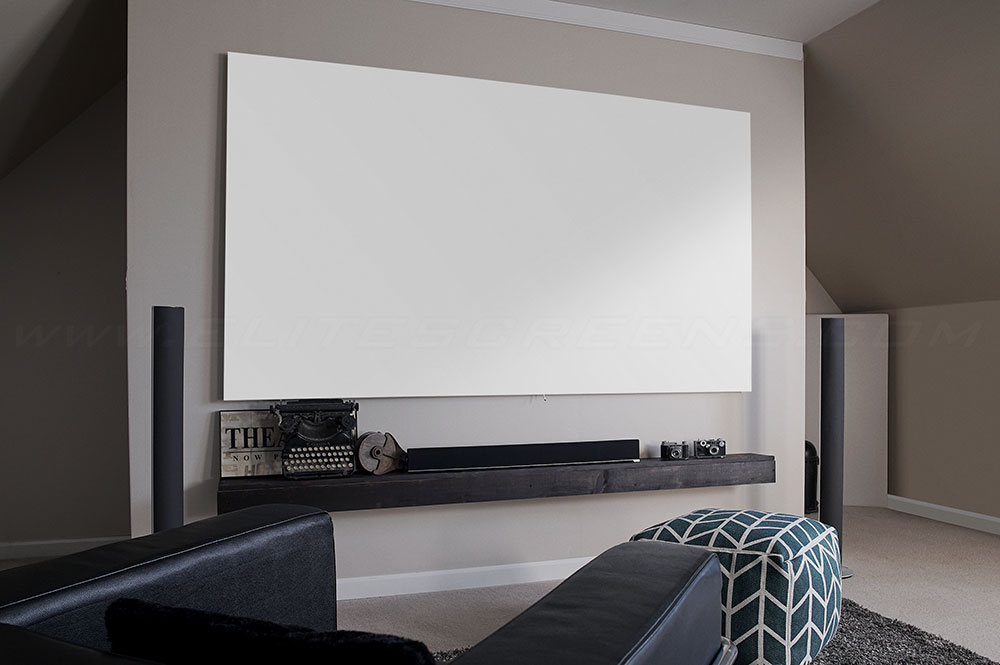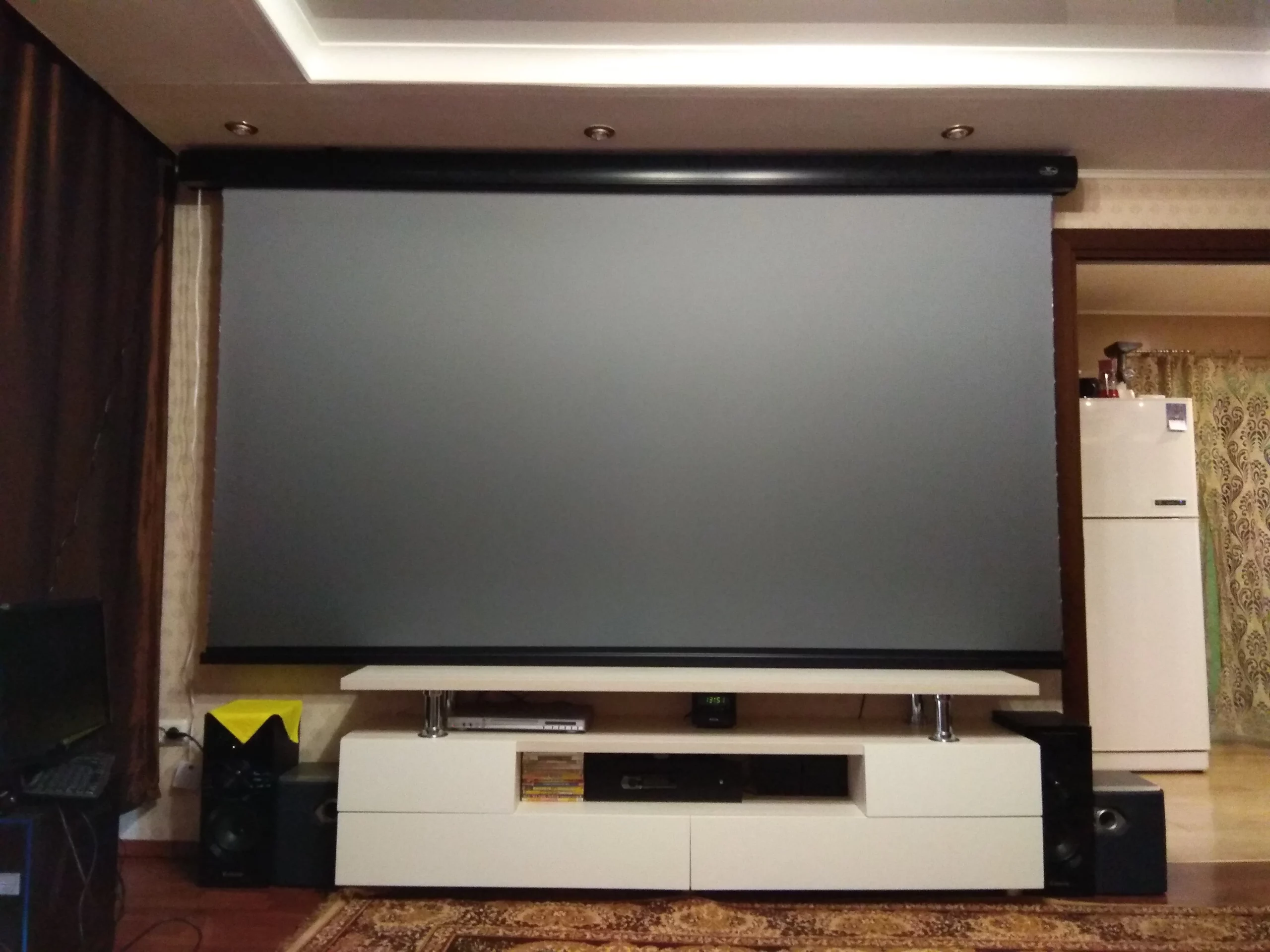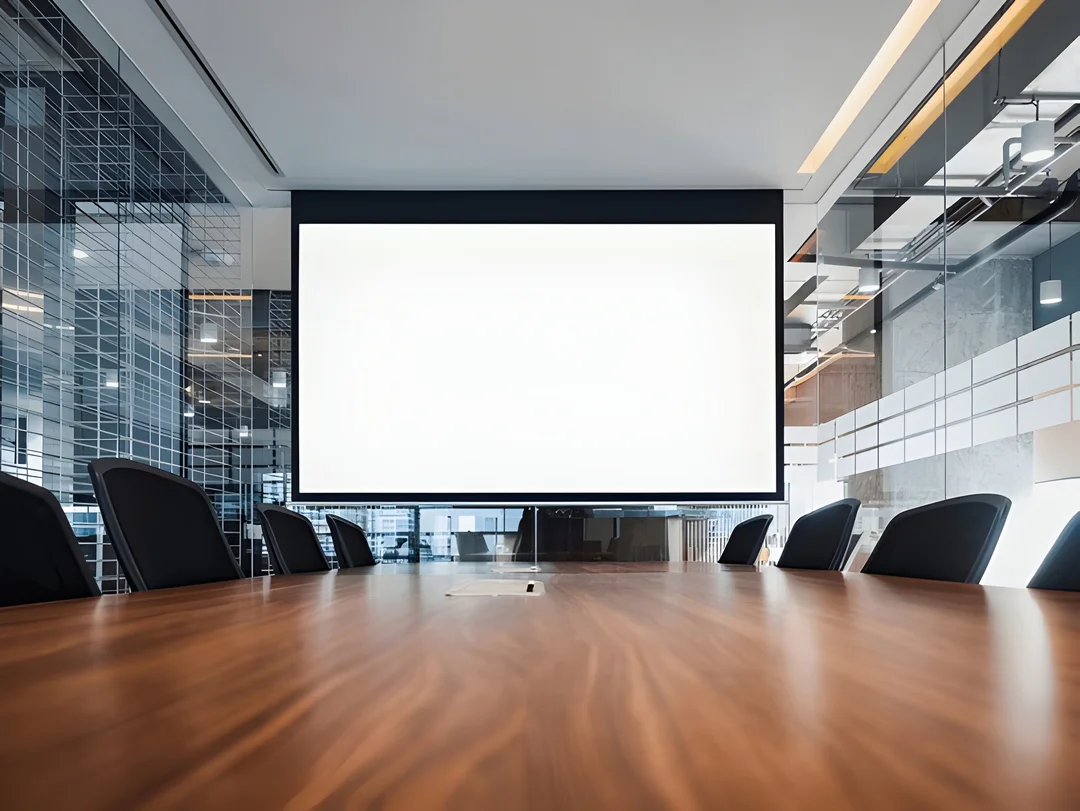Why Consider a Grey Projector Screen?
Exploring the merits of a grey projector screen material reveals compelling reasons to elevate your projection experience.
Delve into the factors that render grey screens a choice worth pondering:
Enhanced Contrast: Grey screens absorb ambient light, yielding deeper black levels and heightened contrast. This richness enhances the vibrancy and cinematic quality of dark scenes in movies and the crispness of text and graphics in presentations.
Improved Color Fidelity: Grey screens foster superior color accuracy by mitigating ambient light and unwanted reflections. This results in more authentic and captivating colors, especially advantageous for home theaters and professional presentations.
Diminished Ambient Light Disturbance: In realistic settings, managing ambient light completely can be challenging. Grey screens excel by reducing glare and reflections, preserving image clarity in well-lit environments such as living rooms or conference rooms.

Visual Comfort: Grey screens minimize glare and optimize contrast, translating into a more comfortable and strain-free viewing experience. Ideal for extended sessions, this feature is particularly beneficial in home theaters.
Broad Viewing Angles: Grey projector screens generally offer expansive viewing angles, accommodating larger audiences with clear and vivid images from diverse seating positions. Be it a home movie night or a sizable presentation, everyone enjoys an excellent view.
Lighting Adaptability: Recognized for their consistency in various lighting conditions, grey screens effortlessly adjust to changing illumination levels. This versatility ensures consistent projection quality, irrespective of lighting dynamics.
In brief, pondering a grey projector screen material is a strategic move for those in pursuit of heightened contrast, impeccable color fidelity, ambient light resilience, visual comfort, extensive viewing angles, and adaptability to fluctuating lighting scenarios. These advantages extend their utility to diverse applications, making grey screens an invaluable addition to home theaters, classrooms, boardrooms, and beyond.
Selecting the Ideal Grey Screen Material
Choosing the right grey projector screen material is pivotal when transitioning to a grey projector screen. Several aspects merit attention to align the material with your unique requirements and the attributes of your projection space. Here are key facets to contemplate when opting for the suitable grey screen material:
Gain and Reflectivity:
Gain denotes the light a screen reflects back to viewers. Grey screens typically possess a lower gain than white screens, translating to reduced light reflection. This is intentional, aiming to heighten contrast and black levels. In controlled lighting setups, brightness distinctions may be negligible. For rooms grappling with challenging lighting conditions, a grey screen with an appropriate gain may be essential to maintain ample brightness.
Ambient Light Rejection (ALR):
Ambient Light Rejection (ALR) technology becomes pivotal when selecting grey screen material. ALR screens are devised to diminish the influence of ambient light sources, such as windows or overhead lighting. They achieve this by reflecting solely the projector’s light while absorbing other light sources. ALR technology can significantly elevate image visibility and quality in settings marked by demanding lighting conditions.
Screen Size and Aspect Ratio:
The screen’s size and aspect ratio should harmonize with the dimensions of your projection space and the content you intend to showcase. Before finalizing the grey screen material, ascertain the available space on your wall or designated screen area. Contemplate the primary aspect ratio you intend to employ (e.g., 16:9 widescreen or 4:3 standard) to circumvent cropping or letterboxing.
Screen Material Composition:
Grey projector screen material come in diverse compositions, including fabric and rigid variants. Your choice hinges on installation preferences, available space, and budget considerations.
Fabric: Fabric screens are flexible, permitting rolling or stretching on a frame. They find favor in home theaters for their relative ease of installation and customizable sizing. Nevertheless, they might require supplementary tensioning to uphold a flat surface and forestall wrinkles.
Rigid: Rigid grey screens are typically fashioned from solid material and are conceived for permanent attachment to a wall or frame. They proffer a uniform, unyielding surface, circumventing the need for tensioning. Rigid screens often find application in dedicated home theaters and commercial installations. The decision between fabric and rigid screens should concur with your installation preferences and spatial constraints. Additionally, weigh the convenience of maintenance, as fabric screens may necessitate periodic tensioning and cleaning.
Room Lighting Conditions:
Deliberate over the lighting ambiance in your room when settling on a grey projector screen material. If you wield complete control over lighting and can fashion a theater-like milieu, a lower gain grey screen might suffice. However, for spaces enmeshed in fluctuating lighting conditions or facing pronounced ambient light, opting for a grey screen with higher gain may become indispensable to sustain adequate brightness levels.
By assiduously weighing these considerations, you can pinpoint the fitting grey screen material that dovetails with your precise projection requisites and ensures superlative image quality within your chosen milieu.
Installation and Setup Simplified
 Achieving a smooth grey projector screen installation and setup is a breeze with these concise steps:
Achieving a smooth grey projector screen installation and setup is a breeze with these concise steps:
Choose Your Mounting Method: Opt for wall, ceiling, frame, or motorized mounting based on your room and screen type. Prioritize stability and security during setup.
Screen Tensioning Is Key: Keep your screen flawlessly flat and wrinkle-free by adhering to the manufacturer’s tensioning guidance, especially for fabric screens.
Calibrate Your Projector Right: Ensure your projector’s settings align with your grey screen’s attributes to achieve peak color accuracy and contrast. If available, leverage calibration tools.
Light Management Matters: Effectively handle room lighting by employing window coverings, strategic artificial lighting placement, neutral wall tones, and smart lighting control systems for an impeccable viewing atmosphere.
Shield Your Screen: Ponder screen protectors and deter pets, children, and sharp objects from making contact with the screen, extending its longevity.
Diverse Applications of Grey Projector Screens
Home Theaters: Grey screens elevate contrast and color precision, crafting a cinematic home experience.
Educational Environments: Grey screens enhance classroom visuals, ensuring clarity even in well-illuminated spaces.
Business Presentations: Grey screens amplify image quality in boardrooms, lending impact to presentations.
Outdoor Entertainment: Grey screens suit outdoor movie nights, delivering top-tier visuals amid varying lighting.
Versatile Spaces: Grey screens adapt to fluctuating lighting in multipurpose rooms, sustaining image excellence.
Gaming Enhancement: Gamers revel in heightened visuals, courtesy of improved contrast and color accuracy on grey screens.
Art and Photo Showcases: Grey screens faithfully portray art and photography, ideal for exhibitions.
Trade Show Excellence: Grey screens help businesses shine at trade shows, offering impactful presentations in convention centers.
Informed Choices for Grey Projector Screens
Opting for a grey projector screen material can greatly enrich your viewing and presenting ventures in diverse scenarios. These screens bring forth perks like enhanced contrast, superior color fidelity, and enhanced visibility when dealing with tricky lighting conditions. Whether establishing a home theater, educational space, boardroom, or outdoor projection, the adaptable and versatile nature of grey screens renders them a valuable choice.
To ensure an astute decision, meticulously gauge your unique requirements, handpick the apt grey screen material, orchestrate precise installation, calibrate your projector, manage room illumination, and contemplate safeguarding measures for your screen. Gauge your financial plan and solicit insights from experts and experienced users to secure the finest solution that aligns with your distinct needs.
In essence, the merits of a grey projector screen, spanning from crafting a cinematic home atmosphere to invigorating presentations and enriching gaming visuals, can metamorphose your projection arrangement into an elevated and immersive realm.




